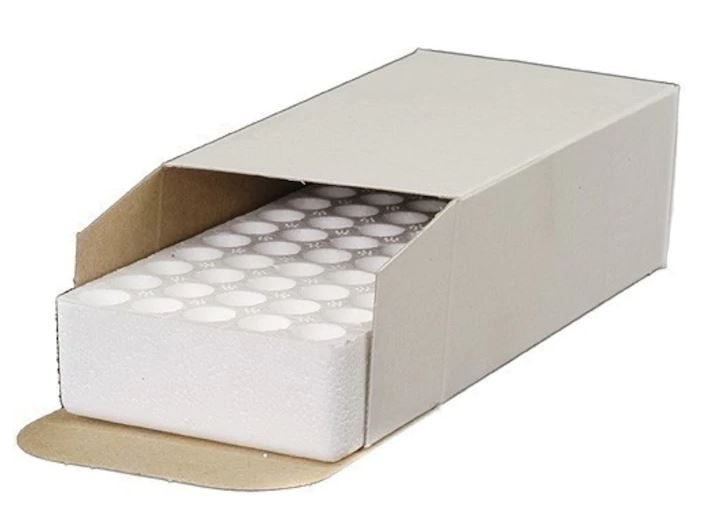
How do you stay sharp when live fire isn’t the best option?
![]()
![]()
Unless you’ve been living under a rock, you’re fully aware of the ammunition shortage plaguing the nation right now. Store shelves are empty or drying up. Online inventory is low. And IF you can find it, it costs an arm and a leg. Getting ammo, even the most common calibers such as 9mm and .45 ACP, is a nightmare.
So how do you keep your skills up at a time when firing live rounds might not be a viable option? How do you stay sharp when you are hesitant to put rounds downrange? Here are a few tips:
Safety First
This is the absolute most important first step. Do NOT miss this. Before you start any dry fire, be sure your gun is completely unloaded and all ammunition is put away. I recommend keeping the ammo in a different room so there is no way it can accidentally be put back into the gun during these exercises.
Also, remember to follow the rules of gun safety just as you would at the range. These are especially important if you are practicing in an uncontrolled environment such as at home.
Dry Fire Spent Brass Drill
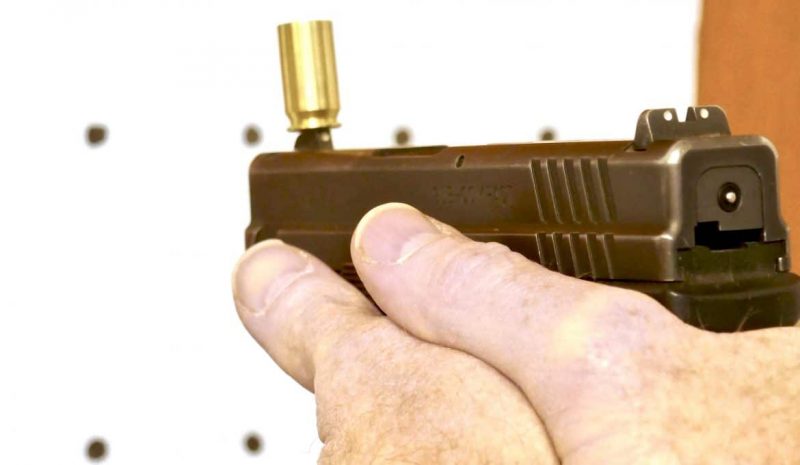
The main reason shooters miss their target, by either a little or a lot, is they move the gun when they shoot. Not after the shot – that happens because of recoil – but before the shot. The natural tendency is to “help” the gun by anticipating the recoil, so we flinch right before the gun goes bang. The unintended consequence of this slight motion is that it ruins the sight alignment right at the moment when the sights should be perfectly lined up on the target. As a result, the bullet goes astray – typically down – and we miss the point of aim.
Eliminate this tendency with the Spent Brass Drill. Here is how it works. Hold your unloaded gun up in the shooting position. Take a used casing (not live ammunition) and place the backside down on top of your slide near the muzzle. Now pull the trigger. Did the casing fall off? Did it wobble? Those are signs you are moving the gun when you pull the trigger. While a little wobble isn’t too bad, if the case falls off, you have a lot of work to do! Focus on grip and trigger pull until the casing doesn’t move. Then do it all over again, repeating until it is committed to muscle memory.
Reload Drill with Snap Caps
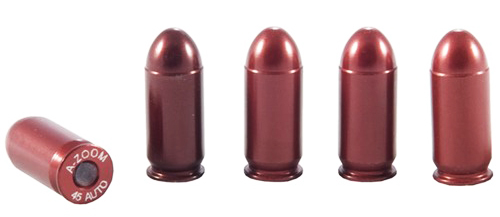
One area of weakness for all shooters, especially new ones, is reloads. We all know how to reload the gun, but are we good at doing it quickly? In a gunfight, you don’t have time to struggle putting a new magazine into the gun. It’s now or never! Practice time is over. To get better at reloads, insert a dummy round or snap cap into your spare magazine. Now lock back the slide with your empty primary magazine inserted to simulate a gun that has run dry. Practice dropping the primary mag, inserting the new one, and getting the gun back into battery.
Once you get the motor skills coordinated, try this with several magazines and see how fast you can do it repeatedly. This skill might just save your life in a gunfight, as you won’t fumble with a reload.
Draw, Partner!
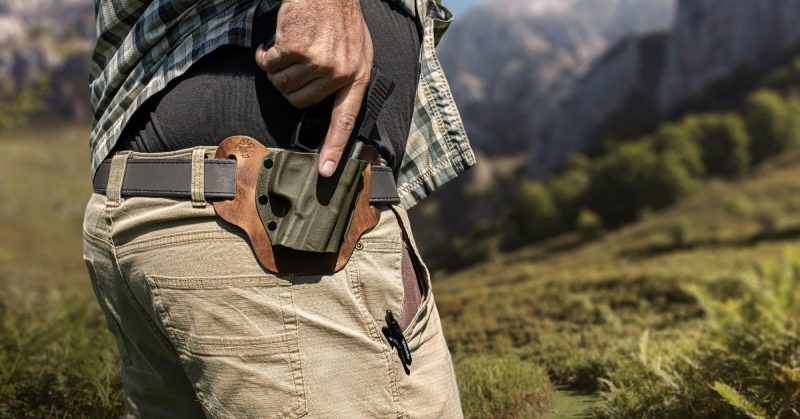
Working on your holster skills is also something you can do with no ammo. Pick your favorite IWB or OWB and practice drawing and reholstering. Start by breaking down the individual elements of the draw: the high-on-the-backstrap grip, the straight up lift, pivoting at the elbow, adding your support hand near your chest, and finally driving the gun out to present, being sure to bring the gun up to your eyes rather than your eyes down to the gun.
Now work on carefully reholstering. Remember, nobody ever won a gunfight by being the fastest back to the holster, so take your time when putting the gun away. There is no need to hurry. Instead, focus on being safe, not muzzling yourself, and placing the gun back firmly.
MantisX
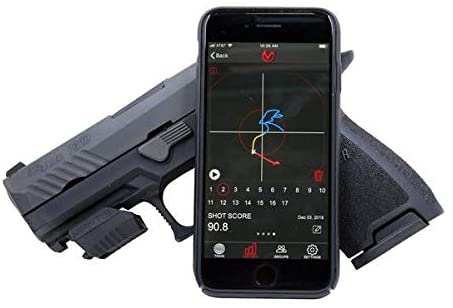
Technology for assisting shooters to diagnose their ills has come a long way in only a few years. One of the most informative devices to help with everything from draw stroke analysis to shot placement is the MantisX. Full disclosure: neither CrossBreed nor I make any money off this product, so this is not a paid endorsement; I just happen to find it very useful.
The MantisX works by attaching a small box to your Picatinny rail and syncing it with a free app for your smartphone or tablet. As you dry fire, the app measures your performance and records it for training. It is very precise. It can also be used for live fire, but I find it extremely helpful for dry fire practice, too.
Practice, Practice, Practice
Shooting is a perishable skill. Don’t use it and it goes away. While it may be tough to find or afford live ammo nowadays, that doesn’t mean you can’t keep up your skills. It just takes a little creativity.
ABOUT THE AUTHOR:
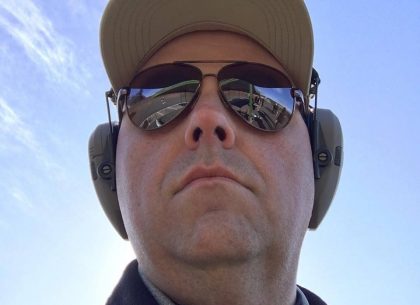
David Workman is an avid gun guy and a contributing writer to several major gun publications. As an NRA-certified instructor, David trains new shooters on basic handgun skills and CCW requirements and is a strong advocate for training as much as you possibly can. “Real life shootouts don’t happen at a box range.”
![]() You may also enjoy these popular articles:
You may also enjoy these popular articles:
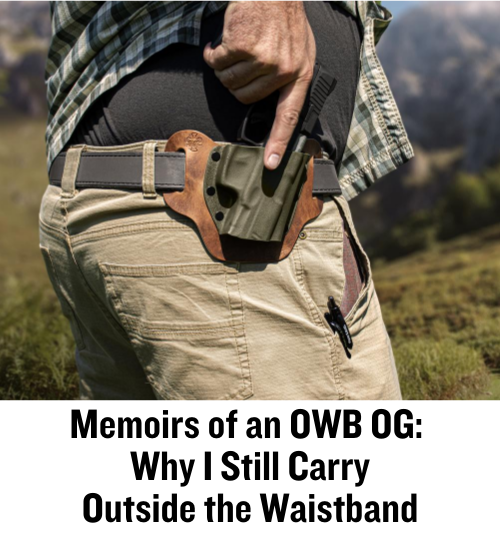



©MTC Holsters, LLC and CrossBreed Holsters Blog, 2021.
Unauthorized use and/or duplication of this material without express and written permission from this site’s author and/or owner is strictly prohibited. Excerpts and links may be used, provided that full and clear credit is given to David Workman and the CrossBreed Blog with appropriate and specific direction to the original content.


